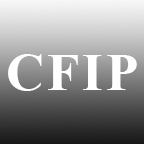US Fed Celebrates Death of Inflation
Bold Move
The US Federal Reserve celebrated the death of inflation with a bold interest rate cut. As the Federal Open Market Committee mulled the bank’s next move during a highly-anticipated meeting yesterday, its twelve members just hoped, and perhaps even prayed (this is, after all, America), that reports of inflation’s death are not ‘greatly exaggerated’. The benchmark federal fund rate receded to five percent.
Yesterday’s decision was, however, not unanimous. In a first since 2005, one of the governors sitting on the committee voiced a dissenting opinion. Michelle Bowman, appointed in 2018 by then-president Donald Trump to represent the interests of community banks at the Federal Reserve, voted in favour of a more modest quarter-percentage-point cut.
In late-afternoon trading, markets rallied with the S&P 500 flirting with its intraday record and jumping 1.1% before cooler heads prevailed and brought the index back down to earth. The yield curve of treasury notes, indicative of future growth expectations, spiked considerably as the spread between ten-year and two-year bonds reached a level not seen since mid-2022 when the economy sprung back to life in the wake of the Corona Pandemic.
In the Far East, the first markets to open for Wednesday’s trading, the Hang Seng index rose 1.8% only to be outpaced by Japan’s Topix which advanced 2.8% on the news from Washington. Mainland China’s CSI 300 index, struggling with economic and regulatory headwinds and losing almost half of its market cap since 2021, showed faint signs of life, climbing 0.8% before losing steam.
A Good Place
Fed chairperson Jerome Powell justified the rate cut by noting that the US economy is in a good place: “Today’s decision is designed to keep it there.” Mr Powell cautioned that rates were not on a “preset” path. The Fed, he said, could well “dial back” its policy restraint “more slowly” should inflation prove more resilient than anticipated.
In its statement, the rate-setting committee expressed ‘greater confidence’ about inflation which, it recognised, remains ‘somewhat elevated’ at an annualised 2.5%. In tandem with most other central banks, the US Federal Reserve considers two percent as the ‘sweet spot’ for inflation – a level that facilitates economic buoyancy and near-full employment without sprouting bloat and bubbles.
Though some investors feared a more reserved quarter-point cut, market analysts almost unanimously anticipate additional interest rate crops both this year and the next as the Fed turns its attention to the job market. At 4.2%, the unemployment rate is low by historical standards but has been creeping up almost surreptitiously since early last year, gaining a full percentage point. Corporate hiring has been paired back across the board even as consumer demand remains strong. However, the Fed’s own labour market projections, released last week, forecast the jobless rate to peak at just 4.4% as GDP growth stabilises at 2% annually over the next several years.
Mr Powell dismissed critics who insist that the Fed is behind the curve: “we think this is timely. But I think you can take this as a sign of our commitment not to get behind.” The US economy is expected to grow by 2.4% (year-on-year) in 2024, tapering off to 1.9% next year. To ensure a ‘soft landing’ of the economy, the Fed is likely to gradually reduce its fund rate to three percent by 2026.
President Joe Biden welcomed the Fed’s decision, posting on X: “inflation and interest rates are falling while the economy remains strong.” He also took a swipe at his critics noting that his policies are ‘lowering costs and creating jobs’.
Playing Politics
Meanwhile, the MAGA-crowd was quick to accuse Mr Powell of ‘playing politics’ and aiding the campaign of Kamala Harris, the Democratic presidential hopeful, oblivious to the fact that rate cuts typically take six months or longer to percolate through the economy. Former president Trump and Fed chair Jerome Powell have regularly been at loggerheads over interest rates with the former demanding monetary flexibility to bolster the economy in what became known as the ‘Pump de la Trump’.
During last month’s meeting in Jacksonville, Wyoming, for the annual Economic Symposium, organised by the Federal Reserve Bank of Kansas and a flagship event where bank governors, academics, and policymakers mingle, Mr Powell already signalled a shift in monetary policy from inflation control to labour market support.
Peter Hooper, a thirty-year Fed veteran now employed by Deutsche Bank, called the rate cut ‘innovative’ and considers the move an ‘insurance policy’ designed to ‘prolong’ the current happy state of the US economy as it finds a comfortable strut. For Mr Powell that is welcome news. Appointed during the Trump Administration, the chair of the world’s pre-eminent central bank had a bumpy ride since the get-go. He skilfully steered the US economy through the Corona Pandemic and the biggest contraction since the Great Depression, and did so with both remarkable panache and ease.
However, Mr Powell’s greatest accomplishment was to fight the inflationary demon without causing the patient undue suffering. Since the peak of the inflation surge in June 2021, when average annual price increases spiked at 9.1% (pushed to that height by faltering supply chains), the genie has been remanded to its proverbial bottle without significant detriment to economic growth or the unemployment rate.
That must stand as a feat of considerable significance. Mr Powell may secure his legacy before long if he now manages to coax his charge into a soft landing. That requires finding the ‘neutral’ rate level which neither stimulates growth nor hampers it.
Former Bank of Canada deputy-governor Jean Boivin introduced a note of caution by reminding that traders in futures markets have already priced in subsequent rate drops: “yesterday’s rate cut points not so much to the beginning of an easing cycle as it does to the end of monetary tightening.” Mr Boivin expressed doubt on the positive outlook for inflation and fears that its further depression may prove harder than reckoned.
Cover photo: US Federal Reserve chairperson Jerome Powell at a press conference.
© 2022 Photo by US Federal Reserve.


